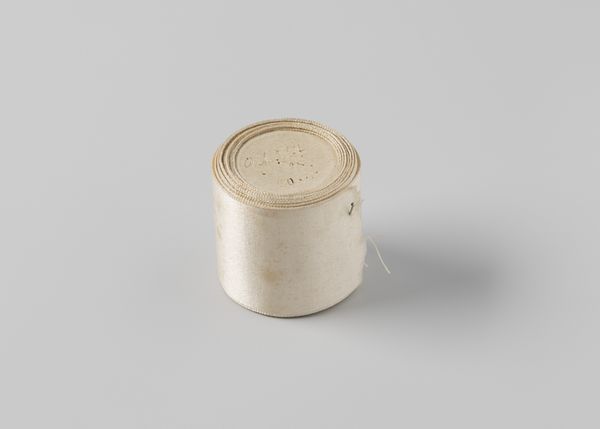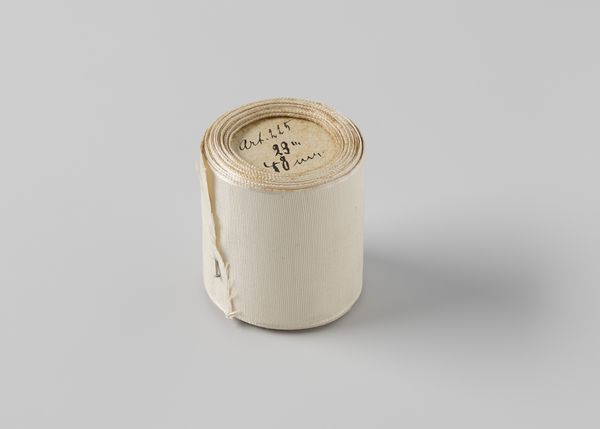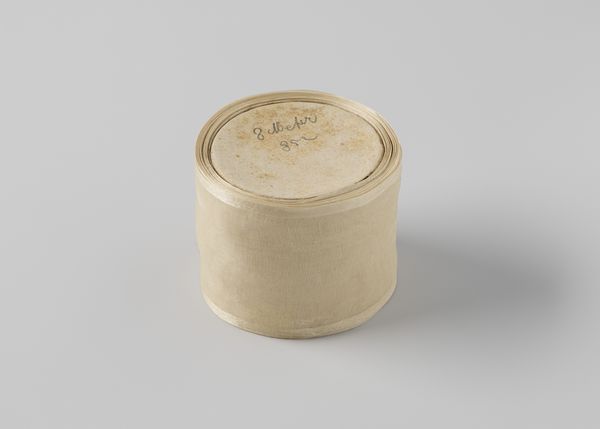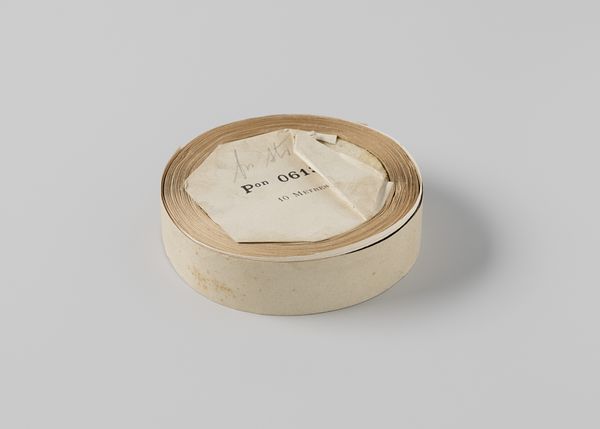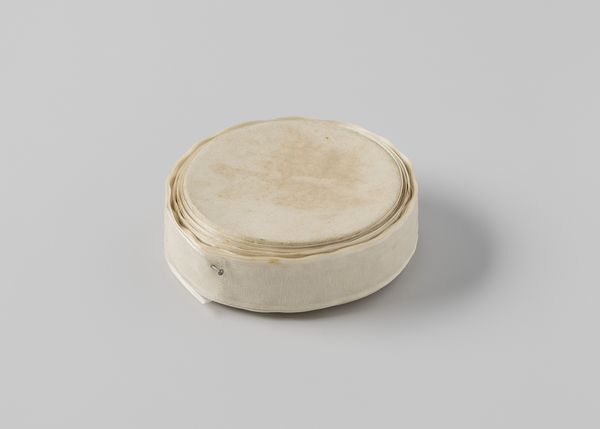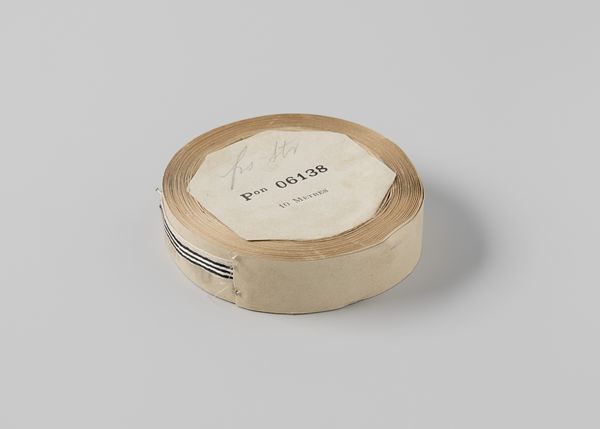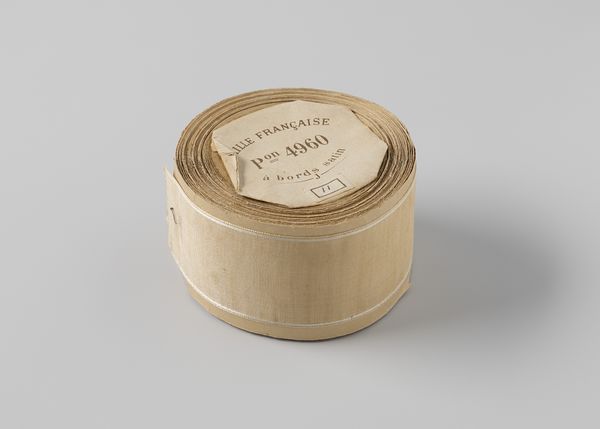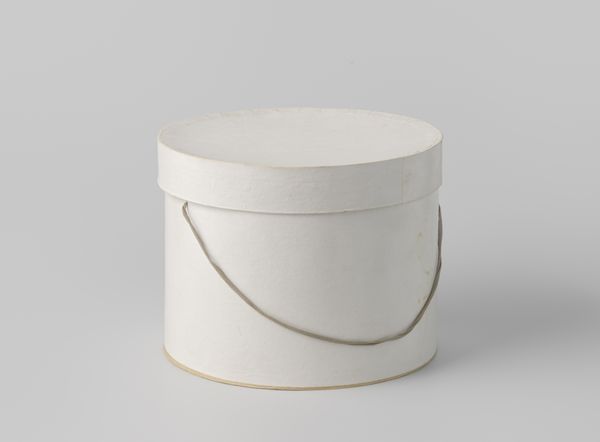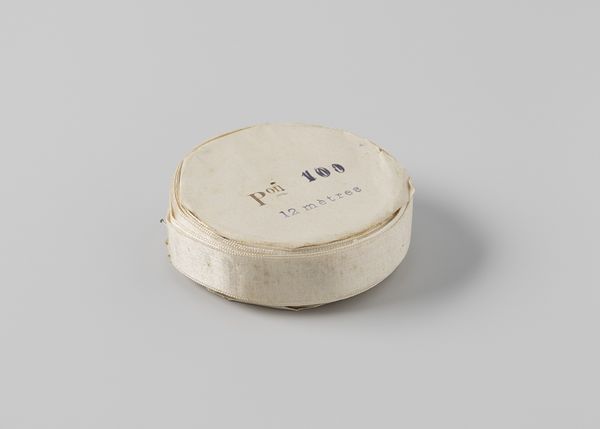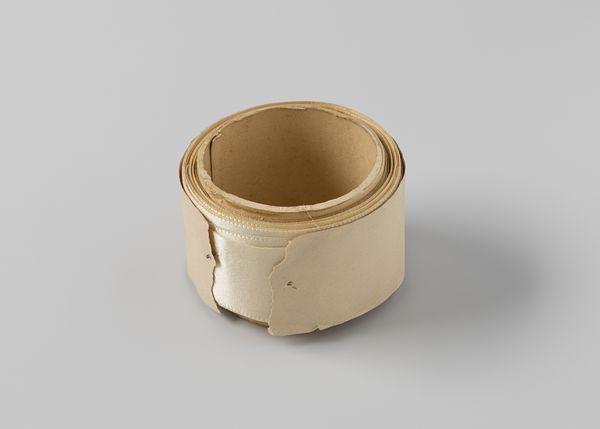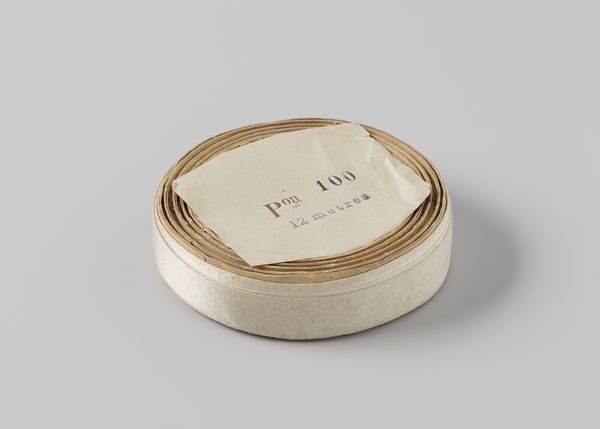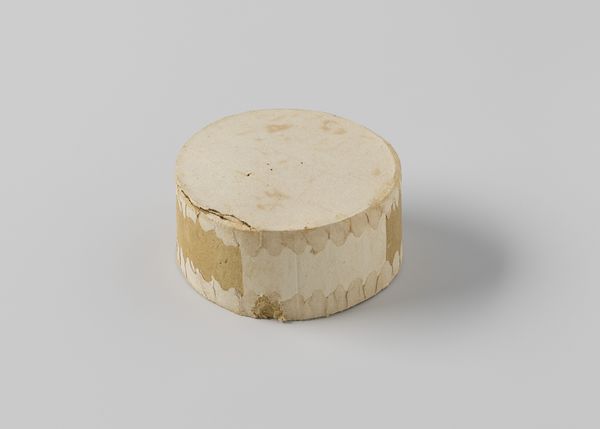
photography
#
photography
#
modernism
Dimensions: width 4.5 cm, diameter 6.8 cm, height 5.8 cm
Copyright: Rijks Museum: Open Domain
Curator: Let's take a closer look at this intriguing piece, titled "Lint van crèmekleurig gaas met streepmotief," which translates to “Ribbon of Cream-Colored Gauze with Striped Pattern." It's attributed to Gustav Schnitzler, and dates back to between 1900 and 1915. It’s held within the Rijksmuseum collection. Editor: My initial impression is one of quiet restraint. The subdued palette, the simple form. It feels like a study in texture and subtle tonal variation, and a photograph no less! Curator: Indeed. While the material is, in essence, a utilitarian object—a ribbon—the image transforms it. There is an appreciation for surface quality in evidence, and it speaks to the burgeoning interest in abstraction within Modernist photography. The photograph has been stripped of its context, allowing its surface to appear novel. Editor: I see what you mean. The photograph prompts a re-evaluation of ordinary objects. Do you think the neutral tones and simple geometric shapes are intended to create a sense of detached objectivity, consistent with Modernist aesthetics? Curator: It's definitely playing with that visual vocabulary. However, the soft focus and creamy palette soften the starkness one might expect. There is still a certain warmth and tactility to the object; its materiality is pronounced by those imperfections, those variations of tone. This piece reflects society’s focus on industry and art creation while at the same time creating new definitions to better serve a more technological world. Editor: That softness is precisely what intrigues me. It resists a purely clinical reading, that Modernist urge towards depersonalization. The crinkles and imperfections of the ribbon, the gentle shadows—they all hint at the hand, at the human element in both its creation and the photography of that very act. The piece reflects the cultural context where everyday materials were beginning to inspire new artistic perspectives. Curator: Absolutely. It exists in a liminal space, straddling representation and pure form, functional object and art object. The simple form presents its subject to be of something, something more interesting, something worthy of observing and thinking about beyond it's actual material of Ribbon. Editor: Yes, that tension is key. It's a seemingly simple photograph that holds within it a surprisingly complex interplay of ideas about art, industry, and the evolving role of photography in the early 20th century. It inspires a recognition of how items like ribbons are also important when appreciating the world. Curator: Exactly. A wonderful piece for understanding photography, indeed. Thank you! Editor: Thank you, too!
Comments
No comments
Be the first to comment and join the conversation on the ultimate creative platform.
